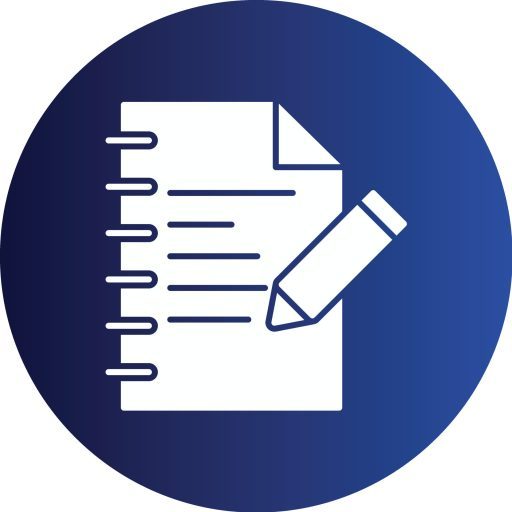I. Introduction
A decision tree is a structured clinical tool that guides healthcare providers through diagnostic and treatment pathways based on patient symptoms and findings.
In the context of neurological and musculoskeletal disorders, decision trees help differentiate between overlapping symptoms, identify red flags, and select appropriate interventions.
These disorders often present with pain, weakness, numbness, gait disturbances, or mobility limitations, requiring careful assessment.
II. Purpose of the Decision Tree
To support evidence-based clinical reasoning.
To reduce diagnostic errors and delays.
To streamline differential diagnosis, especially when symptoms span both neurological and musculoskeletal systems.
To guide safe and effective treatment decisions.
III. Initial Patient Assessment
A. History Taking
Chief complaint: onset, duration, severity, location.
Associated symptoms: numbness, tingling, weakness, fever, trauma.
Functional impact: mobility, ADLs, work performance.
Past medical history: diabetes, stroke, arthritis, autoimmune conditions.
B. Physical Examination
Neurological exam: cranial nerves, motor strength, reflexes, sensation, coordination.
Musculoskeletal exam: joint range of motion, muscle tone, tenderness, swelling, deformity.
Gait and posture: balance, stride, symmetry.
IV. Decision Tree Structure
A. Step 1: Identify Primary Symptom
Pain
Weakness
Numbness/tingling
Stiffness
Loss of coordination
B. Step 2: Localize the Problem
Central nervous system (brain/spinal cord)
Peripheral nervous system (nerves, roots)
Muscles and joints
Bones and connective tissue
C. Step 3: Screen for Red Flags
Sudden onset of paralysis
Loss of bowel/bladder control
Progressive weakness
Fever with joint pain
History of cancer or trauma
D. Step 4: Order Diagnostic Tests
Imaging: MRI, CT, X-ray
Lab tests: CBC, ESR, CRP, autoimmune panels
Electrodiagnostics: EMG, nerve conduction studies
Joint aspiration: if infection or gout is suspected
V. Common Neurological Disorders in the Tree
Disorder Key Features
Stroke Sudden weakness, facial droop, speech difficulty
Multiple Sclerosis Relapsing numbness, vision changes, fatigue
Peripheral Neuropathy Burning, tingling, glove-and-stocking distribution
Parkinson’s Disease Tremor, rigidity, bradykinesia, postural instability
Guillain-Barré Syndrome Ascending weakness, areflexia, recent infection
VI. Common Musculoskeletal Disorders in the Tree
Disorder Key Features
Osteoarthritis Joint stiffness, crepitus, age-related
Rheumatoid Arthritis Symmetrical joint pain, morning stiffness, autoimmune
Gout Sudden joint pain, swelling, uric acid crystals
Herniated Disc Back pain radiating to leg, positive straight leg raise
Myopathy Muscle weakness without sensory loss
VII. Treatment Pathways
A. Neurological Management
Stroke: thrombolytics, rehabilitation, antiplatelets.
MS: immunomodulators, steroids, physical therapy.
Neuropathy: glycemic control, pain management, B vitamins.
Parkinson’s: dopamine agonists, deep brain stimulation.
B. Musculoskeletal Management
OA: NSAIDs, joint injections, physical therapy.
RA: DMARDs, biologics, rheumatology referral.
Gout: colchicine, allopurinol, dietary changes.
Herniated disc: rest, PT, surgery if severe.
Myopathy: treat underlying cause, supportive care.
VIII. Interdisciplinary Collaboration
Neurologists: for complex CNS disorders.
Orthopedists: for structural musculoskeletal issues.
Rheumatologists: for autoimmune conditions.
Physical therapists: for rehabilitation and mobility.
Pain specialists: for chronic pain management.
IX. Patient Education and Follow-Up
Explain diagnosis and treatment plan clearly.
Encourage adherence to medications and therapy.
Monitor for progression or complications.
Schedule regular follow-ups and reassessments.
X. Conclusion
Decision trees are essential tools for navigating the complexity of neurological and musculoskeletal disorders.
They promote structured thinking, early intervention, and patient-centered care.
Mastery of decision tree logic enhances diagnostic accuracy and improves outcomes.
15-Question Multiple Choice Quiz: Decision Tree for Neurological and Musculoskeletal Disorders
Instructions: Choose the best answer. Correct answers are marked with an asterisk (*) for your reference.
What is the primary purpose of a decision tree in clinical practice? a) Increase hospital revenue b) Guide diagnostic and treatment decisions c) Replace physical exams d) Avoid patient interviews
Which symptom is commonly assessed first in the decision tree? a) Appetite b) Pain c) Skin color d) Blood pressure
Which system is affected in multiple sclerosis? a) Musculoskeletal b) Central nervous system c) Endocrine d) Digestive
A red flag symptom in neurological assessment is: a) Joint stiffness b) Sudden paralysis c) Muscle cramps d) Mild fatigue
Which test is used to assess nerve function? a) X-ray b) EMG c) Ultrasound d) Colonoscopy
Which disorder presents with tremor and rigidity? a) Stroke b) Parkinson’s disease c) Gout d) Herniated disc
Peripheral neuropathy often causes: a) Joint swelling b) Tingling in hands and feet c) Muscle spasms d) Vision loss
Which musculoskeletal disorder is autoimmune? a) Osteoarthritis b) Rheumatoid arthritis c) Gout d) Herniated disc
A herniated disc typically causes: a) Neck stiffness b) Radiating leg pain c) Arm weakness d) Chest pain
Which lab test is useful in diagnosing gout? a) Hemoglobin b) Uric acid level c) Glucose d) Potassium
Which specialist manages autoimmune joint disorders? a) Neurologist b) Rheumatologist c) Cardiologist d) Dermatologist
Parkinson’s disease is treated with: a) Antibiotics b) Dopamine agonists c) Steroids d) Antivirals
Which imaging test is best for spinal cord assessment? a) X-ray b) MRI c) CT scan d) PET scan
Which disorder involves ascending muscle weakness? a) MS b) Guillain-Barré Syndrome c) OA d) RA
Patient education should include: a) Avoiding follow-up b) Clear explanation of diagnosis and treatment c) Withholding test results d) Ignoring symptoms

